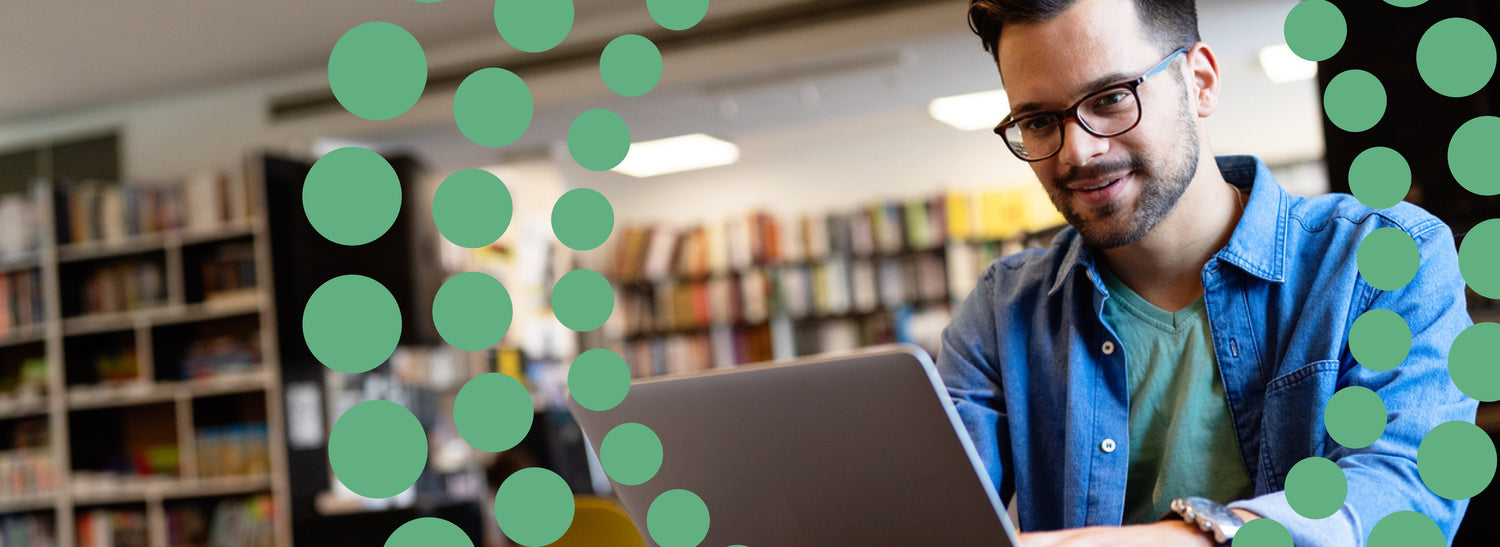Explore our collection of informative and educational blog posts to stay updated on the latest industry trends and expert advice.
Learning Difficulties: What Can Technology Do for Disabled Learners?

One of the most amazing developments I’ve seen in education over the past ten years is the way that technology has created a revolution in possibilities for disabled learners. For years, differently-abled students have struggled with their assignments or been shut out of different classes or subjects because schools had accessibility or instructional problems.
The result has been that disabled students have long been subject to inadequate and unequal educational opportunities.
But the rapid development and application of computer-based technology, however, has created a sea change in available options for disabled students, ending the isolation and limited opportunities disabled students have long faced. Computer programs have been designed to make it easier for disabled students to access material, communicate their ideas and work, and participate in educational experiences.
For example, while Braille reading and writing techniques have helped blind or visually-impaired students continue their education since the nineteenth century, new assistive computer technologies (AT) that include mobility, hearing, and visual aids make Braille, as revolutionary as it was, pale in comparison.
The advent of online learning in particular has created greater accessibility for the many students for whom traditional college courses and college campuses previously presented obstacles to easy accessibility. As Martin Kooper at the United Kingdom’s Open University states, “virtually anyone, irrespective of any disability, can be enabled to interact effectively with a computer.”
Essentially, new technologies allow students to take advantage of many of the same opportunities for success as other students—turning yesterday’s disabled students into today’s enabled students!
What disabilities might be present in the classroom?
It is important to realize that there are many different kinds of disabilities, and that new technologies have been developed to assist those who possess one or more of them. The most common disabilities, according to Cuesta College, fall under these categories:
- Physical: Students with physical disabilities may require the use of braces, a cane or a wheelchair, may use prosthetic limbs, or may be dealing with muscular dystrophy, Lou Gehrig’s disease, multiple sclerosis, or many other conditions, all of which can present accessibility challenges.
- Sensory: Sensory disabilities include visual impairment and blindness, deafness and hard-of-hearing conditions can prevent students from utilizing traditional classroom materials and tools.
- Cognitive: Students with cognitive disabilities can be all over the map in terms of intelligence, but may suffer from difficulties with memory, self-expression, information processing, and other learning disabilities that prevent them from performing their academic tasks in the same manner as other students.
- Psychiatric: These disabilities include a broad spectrum of challenges, from social phobias to bipolar or other personality disorders that make it difficult for them to maintain consistency in their academic work or personal life.
- Health-related: Students suffering from chronic conditions such as diabetes or epilepsy, or other diseases such as cancer often experience difficulty attending class regularly.
While each condition is different, and some students deal with more than one, all students with disabilities face numerous challenges in the traditional classroom environment. These challenges can include being unable to travel quickly from building to building for different classes on a college campus due to a physical disability, or difficulty using the same learning formats as other students.
What is Assistive Technology (AT)?
Electronic and Information Technology is at the heart of this revolution in learning opportunities for disabled students because they are the basis of assistive technology. In the United States, assistive technology (AT) was defined and encoded into law as part of various disabilities protections designed to equalize education.
In President Bill Clinton’s Assistive Technology Act (1998), it was defined in a way that is consistent with the development and use of assistive technologies around the world:
“Any item, piece of equipment, or product system, whether acquired commercially off the shelf, modified, or customized, that is used to increase, maintain, or improve functional capabilities of individuals with disabilities. AT service is directly assisting an individual with a disability in the selection, acquisition, or use of an assistive technology device.”
In other words, when you see someone wearing a hearing aid, using a prosthetic limb, employing speech-to-text software or other tools, they are using assistive technology.
In addition, when students receive extra time to work on an assignment, have someone by their side to take notes during class, or have other aids that are not necessarily a piece of equipment, they are receiving assistance for a documented disability.
Examples of Assistive Technologies
The new forms of assistive technologies are often nothing short of miraculous. For example, watch this footage of theoretical physicist and world-famous genius Stephen Hawking give a lecture to a huge student audience.
Hawking suffers from amyotrophic lateral sclerosis (ALS) and has almost no ability to move or speak on his own. Instead, he uses speech-generating technology in which computer software translates what he types on a keyboard (which he can do only with small physical movements of two fingers or his cheek) into a synthesized voice.
In addition, the computer software includes auto-correct, so that he only needs to type a few letters before the computer recognizes and types out the entire word for him.
Stephen Hawking is one of the best examples of how assistive technology has changed education: without such technology, Hawking would not have been able to make his major contributions to our understanding of the world, and students would not be able to learn from him.
Hawking may be the most famous user of assistive technology, but there are so many new forms of assistive technology available to today’s students that it is difficult to list them all! There are technologies for every category of disability:
- Speech-Recognition software: Students dealing with blindness/visual impairment, or with physical limitations that prevent them from typing on a keyboard, can use text-to-speech devices (mobile and otherwise) to compose their assignments. When using these programs, students speak into a microphone, which then translates their words into typed documents. The most well-known of the software programs that perform this task is Dragon Naturally Speaking, which also recognizes voice commands such as “insert exclamation point.”
- Text-to-Speech software: This kind of assistive technology helps students with visual impairments by allowing them to listen to the text that appears on a computer screen. This is a huge improvement over Braille because once the program is installed on the computer, it can read anything on the screen, no matter what format it is in (e.g. .pdf or website) with no waiting for a Braille translation. This enables students to participate in online activities, use email and text, and have immediate access to course materials. There are many free versions of this software available online, such as Natural Readers.
- Visual Aids: This broad category of assistive technology includes screen magnification software that enlarges portions of the screen where the reader directs the mouse; screen reader software that translates screen text to Braille, text-to-speech programs; audio texts. All of these can be used by students of many different kinds of visual disabilities.
- Audio Aids: Another broad category of assistive technology, these student aids include sound amplification tools; alerting devices that use flashing lights or icons on the computer screen rather than sounds to signal users; close-captioning for videos; TTY (TDD) also known as Telecommunication for the Deaf; phones enabled with Voice Carry-Over (VCO) technologies that allow students with hearing difficulties to communicate over the phone with their own voice.
- Physical Aids: For students with physical mobility, stability, motor coordination, and range of motion challenges, several technologies are available to assist them in completing their schoolwork, including audio books for students who cannot physically handle books; keyboard adapters such as keyguards to prevent mistyping from tremors or loss of control; voice recognition software for students who cannot type.
Online education also helps disabled students
Though disabled students should never be barred from any learning environment, like all students, some do function better in an environment with limited distractions and more accessibility than might be available in many classrooms or on very large campuses.
That’s where online education can be very helpful. For example, the ability to take classes in a single environment, such as a home office, guarantees that disabled students will have all of their assistive technologies available in one place.
Another benefit of online education is that students with behavioral disabilities, who have difficulty concentrating amid the normal distractions of a classroom, or emotional challenges that prevent them from maintaining appropriate classroom behaviors, can create environments in which their ability to focus will not be compromised.
Technology can help students with behavioural issues.
In many ways, the same is true for students suffering from serious illnesses. The comfort of a familiar environment and the ability to work at their own pace that is characteristic of online courses can help these students . For example, students who fall among the autism spectrum can benefit from both assistive technologies and the limited distractions of online courses.
However, any student interested in online education as a way of handling their disability should make sure that their program complies with accessibility standards. As Sheryl Burgstahler, Ph.D. of the University of Washington explains,
The Americans with Disabilities Act (ADA) of 1990 requires that people with disabilities have equal access to public programs and services. According to this law, no otherwise qualified individuals with disabilities shall, solely by reason of their disabilities, be excluded from the participation in, be denied the benefits of, or be subjected to discrimination in these programs.
Besides elevators in buildings, reserved spaces in parking lots, and lifts on buses, the ADA accessibility requirements also apply to Internet-based programs. As the United States Department of Justice clarified, “Covered entities that use the Internet for communications regarding their programs, goods, or services must be prepared to offer those communications through accessible means as well.”
Specifically, if a qualified person with a disability enrolls in a distance learning course offered via the Internet, the course must be made available to him.
The New World of Education
Hopefully, the days are over when disabled students are shunted off into isolated classrooms, without the ability to participate in the regular routines of education and develop social relationships with their peers.
We have such effective new assistive tools generated by developments in electronic and information technology that disabled individuals, some of whom even twenty years ago were unable to communicate with others, can now enjoy all the benefits of education, expand their intellects and abilities, and live their lives to the fullest.
The key feature of contemporary computer-based educational technology is that it is focused on accessibility and offers almost limitless flexibility, making it adaptable to all varieties of disability. This endless opportunity is truly what education should be all about, for everyone.








